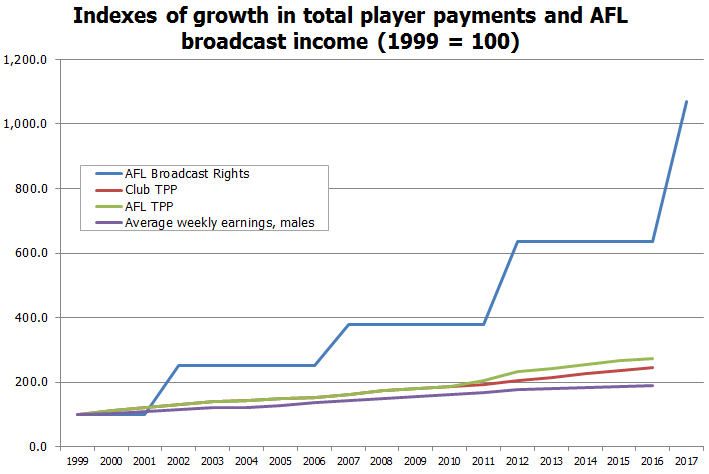It’s hard to argue that rich young men deserve more money. The sympathies of the average person often go to the minimum wage battlers before it goes to footballers on a comparative motza. And that’s fair – no-one at HPN will argue for a second that you shouldn’t read up on Fair Work Commission decisions on the minimum wage or penalty rates.
But ultimately this is a sports (primarily AFL) website, and the AFL is currently locked in an industrial dispute with its players. And it shows no sign of ending. Despite a recent offer to the AFL Players Association to attempt to end the more than year long stand-off, it appears that a final deal is a while away yet. The issues as reported appear to many and varied, with one major sticking point.
Cash money.
Earlier in 2017 the AFLPA was pushing hard for a fixed percentage of total revenue – a contentious issue in the negotiations that seems to fallen off the radar of the most recent round of coverage. Instead, the most recent reported offer to the AFLPA has been a 20% increase immediately, with 1% increases for the next five years.
While this seems generous in isolation, the AFL recently negotiated the single biggest increase to broadcasting rights in the code’s history. This is a massive new income stream, and it makes the offer seem comparatively… well, have a look for yourself:

In this situation, AFL Broadcast Rights include both TV and Radio rights, which have both exploded in value in recent years. The most recent TV rights deal was for $2.508 billion dollars over six years, a roughly 60% increase on the previous deal. Whilst broadcast rights don’t represent the total revenue of the AFL, it provides a decent insight to the state of the AFL’s finances.
However, we know from our post on club revenues that the AFL distribution of funds (including broadcast rights) provides a small fraction of most clubs’ revenue.
A fair question would be to ask how the rise of TPP compares with the wages of the average Australian worker, which we luckily have in graph form:

There is little doubt that compared to the average Aussie worker, footballers have had a pretty decent run over the last 20 years. However, when compared with the rapidly-increasing revenues of the AFL, it’s hard to mount the argument that the players don’t deserve a significantly larger share of the increased success that the AFL is seeing.
Some may point to extra effort being put into grassroots football, or the introduction of the AFLW competition, by the AFL as a mitigation for offering the players such a deal. This argument works at face value, until you find out that it cost the AFL about $4 million for the clubs’ contribution to the AFLW’s running costs – a small fraction of the money being negotiated above. And the AFL spent just $41 million on game development grants, and $16 million on developing new markets. The 2016 AFL Annual Report indicates that total AFL revenues have increased by over $200m in the last decade – a number that will increase by another $175m in 2017. In the same period player wages have increased by less than $100m across the board.
Previously, HPN has assumed that there would be a 50% rise in the salary cap to about $15m per club – a figure that would only amount to between $280 and $320 million of player payments across the entire competition (depending on the spread of increases per year). This would adequately compensate for the loss of the veteran’s allowance, and the removal of the rookie list (with a subsequent expansion of the main list).
While other issues exist on the bargaining table, one can’t help but feel that they would proceed quickly once the issue of pay is sorted out.
